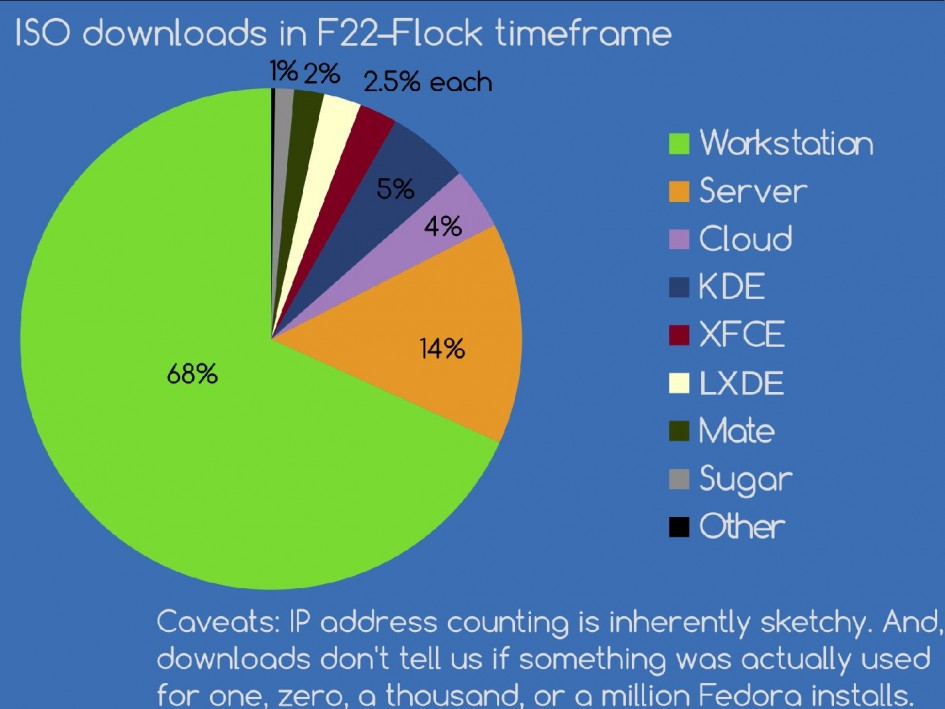
A lot happens in Fedora each year, but what’s behind these numbers? Share your story! Source: Fedora Magazine
2015 has been an active and busy year for Fedora. All year, the contributors across all of the different sub-groups, working groups, special interest groups, and teams help make the magic behind Fedora happen. With a project as large as Fedora, sometimes it can be hard to keep others on different sides of the Project up to date. To help share what everyone has worked on make happen this year, all sub-groups, teams, or other groups are invited to share your “Year in Review” on the Fedora Community Blog!
Writing a “Year in Review” article
Writing a Year in Review article is something to talk with your entire subgroup or team about. The best place to start is with any records, reports, or other statistics that you and your team may have to show off some work you’ve done in 2015. Depending on the subgroup or team, this may be easier to do for some than others. If metrics aren’t your team’s best representation, look more to telling the stories or explaining what you’ve been up to in words.
Regardless of which category you fall into, here’s a good outline to follow when getting information and writing your article.
- Introduction: The quick “elevator pitch” of what your subgroup / team does in a sentence or two. This can often be taken from the first paragraph of your team/group Fedora Wiki page.
- Top 3 Highlights: Choose the top three highlights of what your team did in 2015 – a paragraph for each should be enough. Feel free to write or add more if three isn’t enough!
- Top Goal for 2016: Decide what major goal your subgroup / team wants to accomplish in 2016. As before, you can write or add more if you have more goals in mind!
- Conclusion: Sum up anything else you have left or make shout-outs to anyone or any group that has helped make your work easier in 2015!
If you follow this kind of format, all of the Year in Review articles will roughly follow the same format.
Good things to include
Stuck on finding things to include in your report? Picking the highlights might be easier or harder for some groups than others.
If your group is more of a people-oriented group, such as the Ambassadors or Marketing, it might be better to look at event reports, the number of new Ambassadors for 2015, Magazine highlights, and other “stories” that are harder to tell in numbers. You can find a good example of a retrospective that the Fedora QA team put together for Fedora 21.
An easy way to find content includes a variety of sources, such as:
- Event reports
- Release announcements / notes / changelogs
- Accepted talks / presentations (videos or slides)
- Links to tagged releases (on GitHub, Pagure, Pypi, Forges, etc.)
- Most retweeted / liked tweets, most liked / +1’d social media content
- Most commented blog posts
- Most active mailing list threads
- Pictures!
- They say a picture is worth a thousand words! Did you attend a hackathon or release party? Have a great pick of the logo out in the wild? Include links to them in the article (and make sure they are licensed under a Creative Commons license).
- Anything with “most / best / fastest” or other superlatives attached to them
- Wiki changelogs
- Flock / FUDCon / FAD content
Here are some Markdown and HTML templates to help you get started!
Markdown
Introduction ------------ Top 3 Highlights ---------- * * * Top Goal(s) for 2016 -------------------- 1. 1. 1. Conclusion ---------- Links ----- * * *
HTML
<h2>Introduction</h2>
<p> </p>
<h2>Top 3 Highlights</h2>
<ul>
<li> </li>
<li> </li>
<li> </li>
</ul>
<h2>Top Goal(s) for 2016</h2>
<ol>
<li> </li>
<li> </li>
<li> </li>
</ol>
<h2>Conclusion</h2>
<p> </p>
<h2>Links</h2>
<ul>
<li> </li>
<li> </li>
<li> </li>
</ul>
Getting help
If you know your team has numbers available but you aren’t sure how to collect them or if you need help coming up with ideas of how to tell your story, the Community Operations (CommOps) team is here to help! Feel free to contact us either in IRC at #fedora-commops or on our mailing list.


Start the discussion by commenting on the auto-created topic at discussion.fedoraproject.org